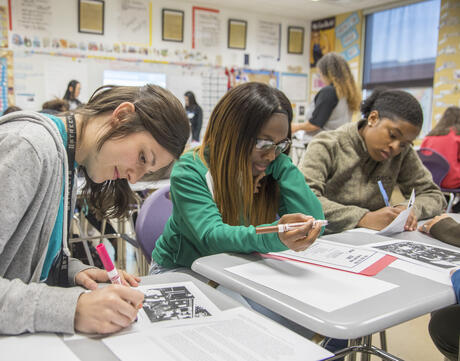
Step 1: Introducing the Assessments
At a Glance
Language
English — USSubject
- History
- Social Studies
Grade
9–12Duration
One 50-min class period- The Holocaust
- Genocide
- Antisemitism
- Democracy & Civic Engagement
Overview
About this Assessment
These assessment options ask students to respond to the course essential question in either a final argumentative essay or a “Choosing to Participate (CTP) Toolbox” project. Choose what works best for your classroom—assigning one project option, both, or allowing student choice between the two. Both project options require the collection of evidence from sources throughout the course to both support written arguments and defend project design choices.
Seven steps are interspersed throughout the course (after Lessons 4, 7, 9, 14, 19, 22, and 25) to introduce students to the assessments and guide them as they gather evidence, develop their theses or project focal points, and begin to write their essays and/or design their toolboxes. Follow the link at the end of each assessment step to proceed to the next lesson in the course.
Procedure
Activities
Materials and Downloads
Quick Downloads
Get Files Via Google
Step 1: Introducing the Assessments
Universe of Obligation
The Roots and Impact of Antisemitism
Unlimited Access to Learning. More Added Every Month.
Facing History & Ourselves is designed for educators who want to help students explore identity, think critically, grow emotionally, act ethically, and participate in civic life. It’s hard work, so we’ve developed some go-to professional learning opportunities to help you along the way.
Exploring ELA Text Selection with Julia Torres
On-Demand

Working for Justice, Equity and Civic Agency in Our Schools: A Conversation with Clint Smith
On-Demand

Centering Student Voices to Build Community and Agency
On-Demand



